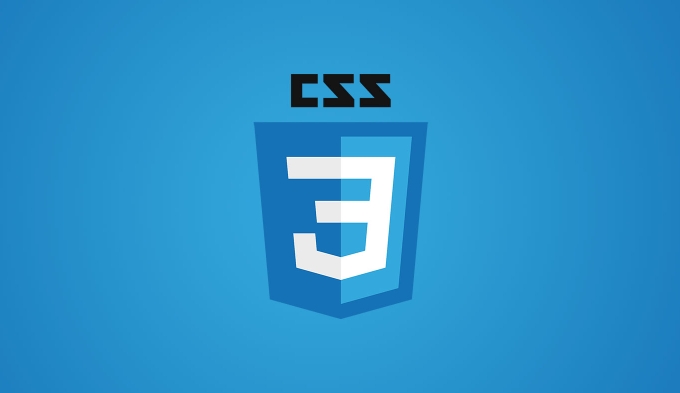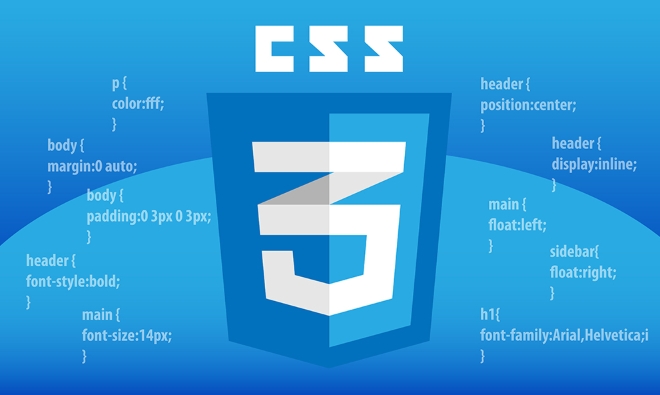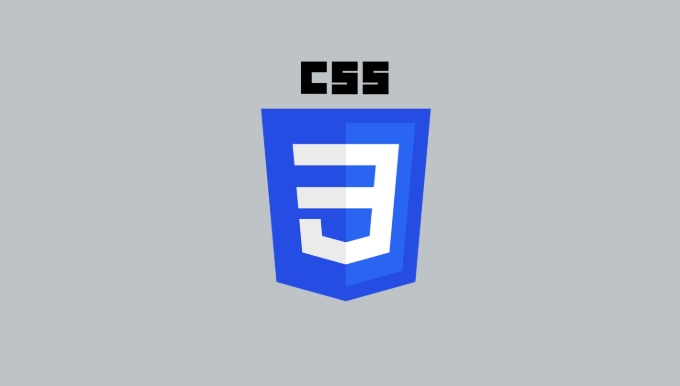Adding styles to web tables can improve visual effects by setting borders, beautifying details, and implementing responsive layouts. 1. Set table borders: Use border-collapse: collapse to merge borders and set border styles for cells uniformly; 2. Beautify tables: Improve readability by alternating row background colors tr:nth-child(even), highlight the table header th style, and reasonably set text alignment and inner margins; 3. Implement responsive layout: Use overflow-x: auto to add horizontal scrolling, or hide secondary columns through media query, and convert the table into a card layout if necessary. Mastering these core methods can make the table clear and easy to read and visually friendly.

It is actually not that difficult to add some styles to the tables on the web page. CSS can help you make the originally dry tables clearer and more comfortable visually. The key is to master several common attributes and layout techniques, and the others depend on what style you want to express.

How to set the table border?
By default, the borders of HTML tables are "separated", which means that each cell has its own border and there may be gaps in the middle. If you want a table that looks more uniform overall, you can use border-collapse property:
table {
border-collapse: collapse;
} This way the borders will be merged into a line. Then set border uniformly, for example:

td, th {
border: 1px solid #ccc;
} If you want the entire table to have borders on the outer edge, you can directly add a border on table . Pay attention to the uniform color and width, otherwise it will appear messy.
How to make the table look better?
It is definitely not enough to have borders alone, and you also have to consider details such as background color, text alignment, and line spacing. It is recommended to start from the following aspects:

Alternating background colors : improve readability, can be easily achieved with
tr:nth-child(even).tr:nth-child(even) { background-color: #f9f9f9; }Header highlights : bold font, change color, and even fixed position (if it is a long table).
th { background-color: #eee; font-weight: bold; }Text alignment : Generally, the title is centered, and the content is adjusted to the left or right according to the situation.
th, td { text-align: left; padding: 8px; }Don't forget to add a little padding, so that the content will not stick to the border too tightly, making it more visually more comfortable.
How to make a responsive form?
It is easy to have problems when reading tables on your mobile phone, especially when there are too many columns. You can optimize your mobile experience in the following ways:
- Horizontal scroll container : wrap the table in a div with
overflow-x: auto, allowing the user to slide left and right. - Hide secondary columns : Use media query to control that some columns are not displayed on the small screen.
- Convert to card layout : For particularly complex tables, you can write additional styles and turn them into "cards" in the mobile terminal.
This step is a little more complicated, but most of the time, only the first method is needed to solve the problem.
Basically that's it. The core of the table style is clear structure and visually friendly, and it does not require too fancy design to make people feel comfortable to watch. Try it a few more times and just find the style that suits your content.
The above is the detailed content of How to style a table with CSS?. For more information, please follow other related articles on the PHP Chinese website!
- Horizontal scroll container : wrap the table in a div with

Hot AI Tools

Undress AI Tool
Undress images for free

Undresser.AI Undress
AI-powered app for creating realistic nude photos

AI Clothes Remover
Online AI tool for removing clothes from photos.

Clothoff.io
AI clothes remover

Video Face Swap
Swap faces in any video effortlessly with our completely free AI face swap tool!

Hot Article

Hot Tools

Notepad++7.3.1
Easy-to-use and free code editor

SublimeText3 Chinese version
Chinese version, very easy to use

Zend Studio 13.0.1
Powerful PHP integrated development environment

Dreamweaver CS6
Visual web development tools

SublimeText3 Mac version
God-level code editing software (SublimeText3)
 CSS tutorial for creating loading spinners and animations
Jul 07, 2025 am 12:07 AM
CSS tutorial for creating loading spinners and animations
Jul 07, 2025 am 12:07 AM
There are three ways to create a CSS loading rotator: 1. Use the basic rotator of borders to achieve simple animation through HTML and CSS; 2. Use a custom rotator of multiple points to achieve the jump effect through different delay times; 3. Add a rotator in the button and switch classes through JavaScript to display the loading status. Each approach emphasizes the importance of design details such as color, size, accessibility and performance optimization to enhance the user experience.
 Addressing CSS Browser Compatibility issues and prefixes
Jul 07, 2025 am 01:44 AM
Addressing CSS Browser Compatibility issues and prefixes
Jul 07, 2025 am 01:44 AM
To deal with CSS browser compatibility and prefix issues, you need to understand the differences in browser support and use vendor prefixes reasonably. 1. Understand common problems such as Flexbox and Grid support, position:sticky invalid, and animation performance is different; 2. Check CanIuse confirmation feature support status; 3. Correctly use -webkit-, -moz-, -ms-, -o- and other manufacturer prefixes; 4. It is recommended to use Autoprefixer to automatically add prefixes; 5. Install PostCSS and configure browserslist to specify the target browser; 6. Automatically handle compatibility during construction; 7. Modernizr detection features can be used for old projects; 8. No need to pursue consistency of all browsers,
 What is the difference between display: inline, display: block, and display: inline-block?
Jul 11, 2025 am 03:25 AM
What is the difference between display: inline, display: block, and display: inline-block?
Jul 11, 2025 am 03:25 AM
Themaindifferencesbetweendisplay:inline,block,andinline-blockinHTML/CSSarelayoutbehavior,spaceusage,andstylingcontrol.1.Inlineelementsflowwithtext,don’tstartonnewlines,ignorewidth/height,andonlyapplyhorizontalpadding/margins—idealforinlinetextstyling
 Creating custom shapes with css clip-path
Jul 09, 2025 am 01:29 AM
Creating custom shapes with css clip-path
Jul 09, 2025 am 01:29 AM
Use the clip-path attribute of CSS to crop elements into custom shapes, such as triangles, circular notches, polygons, etc., without relying on pictures or SVGs. Its advantages include: 1. Supports a variety of basic shapes such as circle, ellipse, polygon, etc.; 2. Responsive adjustment and adaptable to mobile terminals; 3. Easy to animation, and can be combined with hover or JavaScript to achieve dynamic effects; 4. It does not affect the layout flow, and only crops the display area. Common usages are such as circular clip-path:circle (50pxatcenter) and triangle clip-path:polygon (50%0%, 100 0%, 0 0%). Notice
 Styling visited links differently with CSS
Jul 11, 2025 am 03:26 AM
Styling visited links differently with CSS
Jul 11, 2025 am 03:26 AM
Setting the style of links you have visited can improve the user experience, especially in content-intensive websites to help users navigate better. 1. Use CSS's: visited pseudo-class to define the style of the visited link, such as color changes; 2. Note that the browser only allows modification of some attributes due to privacy restrictions; 3. The color selection should be coordinated with the overall style to avoid abruptness; 4. The mobile terminal may not display this effect, and it is recommended to combine it with other visual prompts such as icon auxiliary logos.
 How to create responsive images using CSS?
Jul 15, 2025 am 01:10 AM
How to create responsive images using CSS?
Jul 15, 2025 am 01:10 AM
To create responsive images using CSS, it can be mainly achieved through the following methods: 1. Use max-width:100% and height:auto to allow the image to adapt to the container width while maintaining the proportion; 2. Use HTML's srcset and sizes attributes to intelligently load the image sources adapted to different screens; 3. Use object-fit and object-position to control image cropping and focus display. Together, these methods ensure that the images are presented clearly and beautifully on different devices.
 Demystifying CSS Units: px, em, rem, vw, vh comparisons
Jul 08, 2025 am 02:16 AM
Demystifying CSS Units: px, em, rem, vw, vh comparisons
Jul 08, 2025 am 02:16 AM
The choice of CSS units depends on design requirements and responsive requirements. 1.px is used for fixed size, suitable for precise control but lack of elasticity; 2.em is a relative unit, which is easily caused by the influence of the parent element, while rem is more stable based on the root element and is suitable for global scaling; 3.vw/vh is based on the viewport size, suitable for responsive design, but attention should be paid to the performance under extreme screens; 4. When choosing, it should be determined based on whether responsive adjustments, element hierarchy relationships and viewport dependence. Reasonable use can improve layout flexibility and maintenance.
 What are common CSS browser inconsistencies?
Jul 26, 2025 am 07:04 AM
What are common CSS browser inconsistencies?
Jul 26, 2025 am 07:04 AM
Different browsers have differences in CSS parsing, resulting in inconsistent display effects, mainly including the default style difference, box model calculation method, Flexbox and Grid layout support level, and inconsistent behavior of certain CSS attributes. 1. The default style processing is inconsistent. The solution is to use CSSReset or Normalize.css to unify the initial style; 2. The box model calculation method of the old version of IE is different. It is recommended to use box-sizing:border-box in a unified manner; 3. Flexbox and Grid perform differently in edge cases or in old versions. More tests and use Autoprefixer; 4. Some CSS attribute behaviors are inconsistent. CanIuse must be consulted and downgraded.






